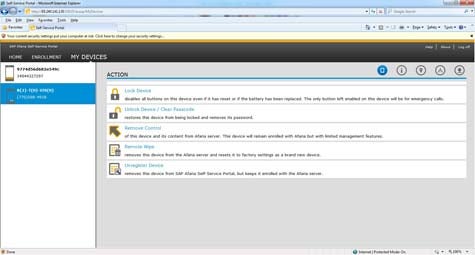While it’s one thing to give users a mobile computing device, it’s quite another to actually manage mobile computing at scale. As mobile computing becomes more pervasive across the enterprise, it’s pretty clear that the introduction of mobile computing devices is only the tip of the iceberg. IT organizations in 2013 are going to find themselves re-engineering entire business processes to accommodate mobile computing devices that have the potential to make the business a whole lot more agile across the board.
To help IT organizations exploit that opportunity, SAP today rolled out updates to the SAP Afaria Enterprise Mobility Management platform that span everything from setting up application stores, integration with Microsoft Active Directory, enhanced self-service capabilities for end users, increased automation, improved security and finally support for Windows 8.
According to Bryan Whitmarsh, senior director for the SAP solution management team, the need to have a plan for managing mobile computing across the enterprise has reached a critical state. Mobile computing is now the Wild West of IT. Without a plan, most IT organizations will discover to their dismay in 2013 that they don’t really have an approach for managing mobile computing that scales in an era where end users are not only bringing their own devices, but also applications, to work.
The Afaria platform, based on technology originally developed by Sybase, is designed to not only allow IT organizations to build mobile computing applications, but actually also manage them regardless of whether they were created by IT or a third-party software developer.
Going into 2013, mobile computing is clearly one of the biggest challenges facing enterprise IT. Business users have voted overwhelmingly to incorporate these devices into their personal lives and daily business activities. Unfortunately, the responsibility for securely managing these devices is often an afterthought left up to the internal IT department to solve. Whitmarsh contends that what IT organizations need at this juncture is a platform for building and managing mobile computing applications and devices that will scale as business reliance on mobile computing intensifies.
Unfortunately, what most organizations have in place today is a reactionary approach to mobile computing that tends to separate the building of mobile applications from the management of those applications and the device they run on. Arguably, that’s a recipe for at the very least increased costs, if not an outright security incident waiting to happen.



